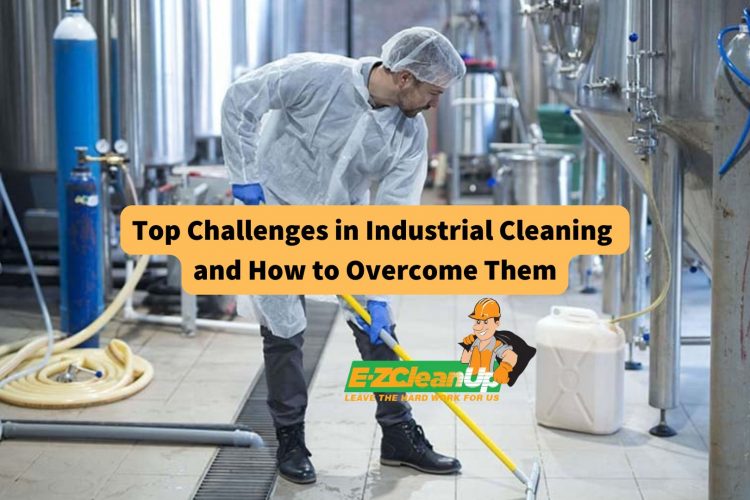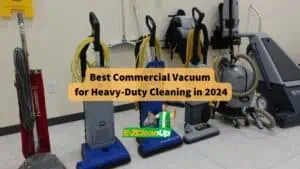Industrial cleaning is necessary for safe and effective cleaning–but it could come with unique challenges. Facilities must handle hazardous materials, meet strict regulations, and manage complex machinery. Likewise, the presence of labor shortages and the push for eco-friendly methods can add to these issues.
This article explores the top challenges in industrial cleaning and how to overcome them effectively and safely.
#1 Why Good Industrial Cleaning Matters
Good industrial cleaning is important for a safe and efficient workplace. First, it improves equipment performance by preventing the buildup of dirt and contaminants, which can lead to expensive breakdowns and downtime.
Second, regularly opting for industrial cleaning services can help reduce the chances of accidents from slippery floors or hidden hazards. Moreover, a clean environment supports health regulations. This can guarantee every employee’s well-being and also extend the life of machinery.
Overall, adding industrial cleaning to a company’s list of priorities helps improve productivity and reduces operational costs.
#2 Common Challenges and Practical Solutions in Industrial Cleaning
Handling Hazardous Materials
Problem: Hazardous materials can harm workers’ health and require special care to keep everyone safe and meet safety rules.
Solution:
- Use the right cleaning tools like spill kits and HEPA filter vacuums to safely handle hazardous materials.
- Train employees on proper handling, the use of Personal Protective Equipment (PPE), emergency steps, and how to read Safety Data Sheets (SDS) for specific risks.
- Follow OSHA rules on labeling, keeping SDS accessible, and doing regular safety checks to stay compliant.
Managing Large Spaces Efficiently
Problem: Large industrial facilities require a lot of time and effort to clean, which can lead to inefficiencies and higher costs.
Solution:
- Break the facility into smaller zones for easier and more focused cleaning. You can also assign teams to each section for better accountability.
- Invest in powerful tools like floor scrubbers, vacuums, and other high-capacity equipment to cover large areas faster while maintaining cleanliness.
- Set up a cleaning schedule that fits around production times to minimize downtime. Doing deep cleaning during off-peak hours can also help avoid disrupting operations.
Ensuring Worker Safety
Problem: Slips, falls, and chemical exposure are serious risks in industrial cleaning, which can lead to injuries and health problems.
Solution:
- Create clear safety guidelines for cleaning tasks. This can include identifying hazards, assessing risks, and responding to emergencies. Make sure these protocols are easy for all employees to access.
- Give workers gloves, goggles, masks, and slip-resistant shoes. Train employees on how to use and maintain their protective gear for maximum safety.
- Offer continuous training on safe cleaning techniques, handling hazardous materials, and operating equipment. Provide refresher courses to keep safety knowledge fresh and prevent accidents.
Cleaning Hard-to-Reach Areas
Problem: Industrial facilities often have high ceilings, machinery, and complex layouts that create hard-to-reach spaces. This can allow dust and debris to build up, which affects cleanliness and safety.
Solution:
- Invest in lift equipment like scissor lifts or aerial work platforms to safely access high areas, which can help reduce the risk of falls.
- Provide cleaning staff with extendable tools such as long-handled dusters, vacuum attachments, and scrubbers to clean hard-to-reach spaces without ladders or scaffolding.
- Train employees on how to safely use lift equipment and extendable tools. This training should include safety protocols, effective cleaning techniques, and regular maintenance checks for equipment.
Dealing with Tough Contaminants
Problem: Tough grease, grime, and residue often build up in industrial settings. This eventually affect operations, equipment performance, and safety if not properly cleaned.
Solution:
- Choose high-quality industrial solvents that are effective at breaking down grease and oil. Before using, make sure they are safe for the surfaces being cleaned.
- Use steam cleaning equipment that uses high-temperature steam to remove contaminants without harsh chemicals. This option offers a safer and more eco-friendly option.
- Equip cleaning teams with scrub brushes, abrasive sponges, and pads to physically remove tough residues without damaging surfaces.
- Set up a regular cleaning plan focused on high-traffic areas or machinery prone to accumulating contaminants. Cleaning regularly can help prevent buildup and make cleaning more efficient.
Environmental Concerns
Problem: The use of harsh chemicals and excessive water in industrial cleaning can harm the environment through pollution, water waste, and damage to local ecosystems.
Solution:
- Switch to biodegradable, eco-friendly cleaning products that are effective and less harmful. Look for certifications like Green Seal or EcoLogo to ensure environmental responsibility.
- Set up water reclamation systems to capture and treat wastewater, to allow for reuse and reduce water consumption.
- Minimize waste by using concentrated cleaning solutions, implementing a waste segregation system, and promoting reusable cleaning materials like microfiber cloths.
- Provide training on eco-friendly cleaning methods, proper use of cleaning agents, and waste reduction to encourage sustainability within the workforce.
Maintaining Cleanliness Standards in High-Traffic Areas
Problem: High-traffic areas–such as loading docks and break rooms–quickly accumulate dirt and germs. This problem can require frequent cleaning to maintain hygiene.
Solution:
- Set up a routine cleaning plan for high-traffic areas to make sure cleanliness is maintained throughout the day.
- Educate staff on keeping these areas tidy between professional cleanings by promoting simple hygiene habits–like wiping down surfaces and disposing of trash properly.
Managing Costs of Industrial Cleaning
Problem: Industrial cleaning can be expensive. It can strain budgets with high costs for equipment, labor, and supplies.
Solution:
- Use durable equipment and bulk-buy supplies to save long-term costs.
- Regularly maintain equipment to reduce repair costs and extend lifespan.
- Teach proper use of cleaning supplies and tools to minimize waste.
- Regularly review cleaning methods to improve efficiency and reduce costs.
- Track expenses, schedule tasks, and monitor supplies for cost savings.
#3 FAQs
What are the main costs involved in industrial cleaning?
The main costs include labor, cleaning supplies, equipment, and maintenance.
How can I save on cleaning supplies?
Buy in bulk, use concentrated cleaning solutions, and choose durable, reusable cleaning materials to reduce supply costs.
What’s the best way to track cleaning expenses?
Use cleaning management software to monitor spending, track tasks, and optimize resource usage.
#4 The Bottom Line – A Sustainable Workplace with Industrial Cleaning
Industrial cleaning is key to keeping the workplace safe and efficient. While challenges like handling hazardous materials and managing costs can be tough, using the right equipment, sticking to cleaning schedules, and training employees can help solve these problems.
Focusing on eco-friendly practices and worker safety benefits both health and the environment. By creating a culture of cleanliness, companies can improve productivity, reduce risks, and guarantee a safer and more sustainable workplace.













